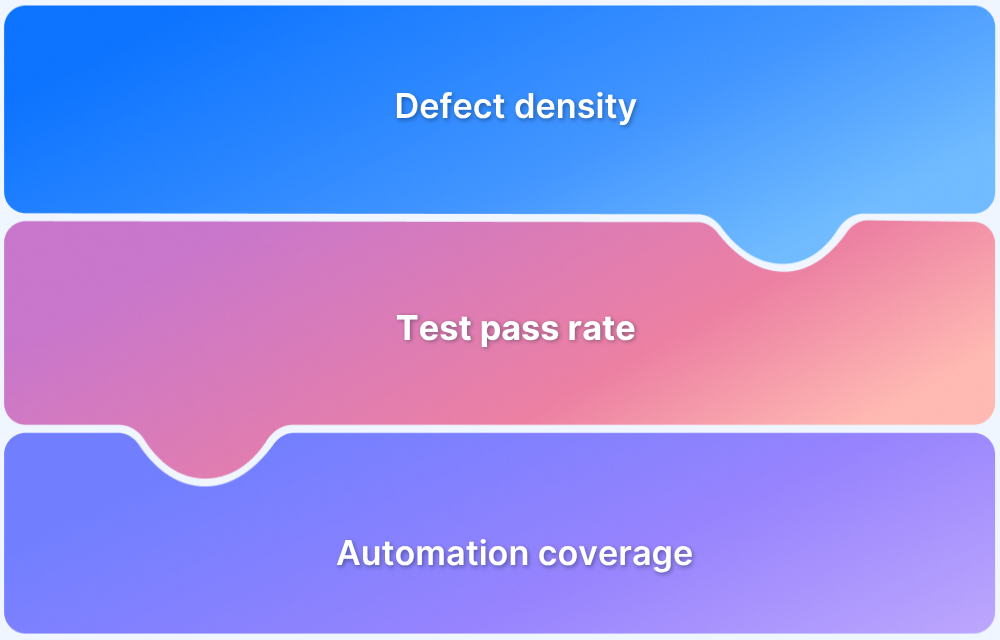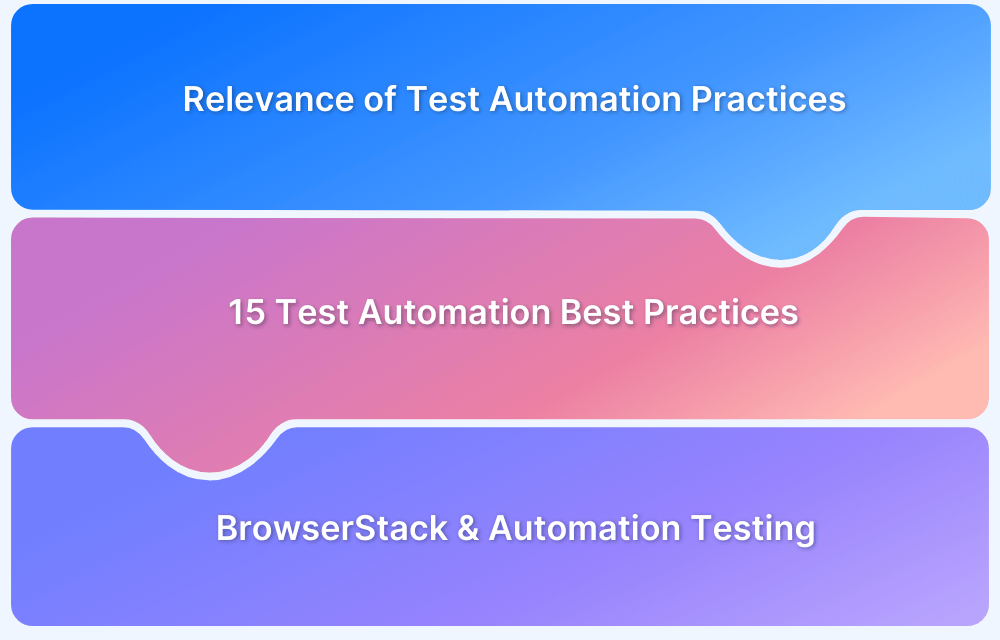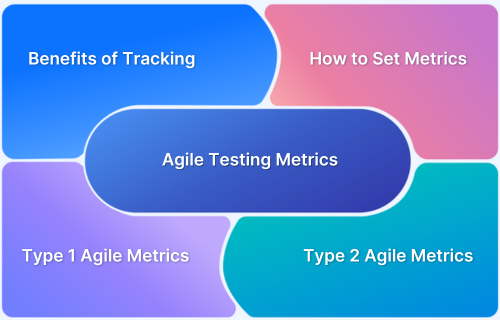As software teams strive for faster releases and higher quality, test automation has become a critical investment. But how do you know if it’s paying off?
Test Automation ROI helps quantify the value delivered by automation in balancing upfront costs with long-term gains like reduced manual effort, faster feedback, and better test coverage.
Overview
How to Calculate Automation ROI?
Automation ROI (%)=((Benefits from Automation−Automation Costs)/Automation Costs)×100
Why calculate Automation ROI?
- Justify the Investment
- Compare Manual vs Automated Testing
- Budget and Resource Allocation
- Measure Efficiency and Effectiveness
- Business Stakeholder Confidence
- Continuous Improvement
Factors Affecting Automation ROI:
- Initial Investment
- Test Case Selection
- Maintenance Effort
- Test Execution Speed and Frequency
- Team Skill and Productivity
- Time Saved
- Defect Detection and Quality Gains
- Integration with CI/CD and DevOps
- Reusability and Scalability
- Project Lifecycle Duration
This article explores how to measure, improve, and make the most of your automation ROI.
What is Test Automation ROI?
Test Automation ROI (Return on Investment) is a metric that evaluates the financial and efficiency benefits gained from automating software tests compared to the total costs involved.
It helps determine whether the investment in test automation like tools, development time, and maintenance results in measurable savings through faster test cycles, reduced manual effort, and earlier bug detection.
Formula for Test Automation ROI:
Automation ROI (%)=((Benefits from Automation−Automation Costs)/Automation Costs)×100
Why should you calculate ROI in Automation Testing?
Here’s why calculating ROI (Return on Investment) in automation testing is important:
- Justify the Investment: Automation testing requires upfront investment in tools, infrastructure, and skilled resources. Calculating ROI helps determine whether long-term savings and efficiency justify these costs.
- Compare Manual vs Automated Testing: ROI provides a data-driven comparison between manual and automated testing, helping teams identify when and where automation is most beneficial.
- Budget and Resource Allocation: A clear ROI supports better decision-making regarding where to allocate testing budgets and engineering efforts, especially for repetitive or high-risk test scenarios.
- Measure Efficiency and Effectiveness: ROI helps track improvements in test cycle time, coverage, and defect detection, showing how automation enhances overall quality and speed.
- Business Stakeholder Confidence: By presenting test automation as a value-generating activity, ROI calculations help gain leadership support and funding for scaling automation initiatives.
- Continuous Improvement: Measuring ROI over time allows teams to refine their automation strategy, prioritize high-impact areas, and eliminate low-value automated tests.
How to calculate test automation ROI
The most straightforward method of calculating test automation ROI is the formula below:
ROI = Savings ÷ Investment
- Savings: The amount gained by replacing manual tests with automated tests.
- Investment: The costs funneled into setting up test automation pipelines.
ROI can denote any unit for savings or investment – usually pertaining to money or time.
Savings
Savings refers to the difference between the costs of running tests manually as opposed to running those same tests automatically a certain number of times over a certain period. In simpler terms:
Savings = (time to run a single manual test – time to run the same test in automation) X number of tests X number of test runs
In the above formula, the ‘number of tests’ must be an average over the specified duration. Additionally, if tests are faster, there’s a much higher likelihood of attaining positive ROI.
Investment
Investment refers to the total sum of fixed and ongoing expenses that go into test automation. This includes time and money spent while actually setting up and configuring the automation framework, as well as time and effort that goes into writing tests scripts and maintaining tests.
Investment = time required to build frameworks + maintenance cost + (time to code one tests X number of tests)
Maintenance costs also take into account the expenses of identifying, analyzing, and resolving failed tests. This includes false positive, flaky tests, development bugs, and actual failed tests.
Maintenance costs = maintenance time for one failed test case X % of failed tests per test run X number of test cases X number of test runs
Remember that frequent test failures make it harder and take longer to attain positive ROI.
Bear in mind that tests change over time. Software expands, new features are added, developers and QAs may choose to code in newer programming languages, etc. All of this needs to be accounted for in the ROI, in particular the maintenance costs. If a team starts out with 500 tests, it will probably grow to 1000 tests (a conservative estimate) by the end of the year.
What is Efficiency ROI in Software Testing?
Efficiency ROI in Software Testing refers to the return on investment explicitly measured in terms of time, effort, and resource efficiency, rather than just financial gain. It focuses on how well testing activities, especially automated ones, improve productivity, speed, and quality in the software development lifecycle.
Why it Matters?
- Efficiency ROI is especially useful in agile and DevOps environments, where rapid iterations and early feedback loops are critical.
- It provides a more practical, productivity-focused view of ROI, helping justify automation even when financial ROI is harder to calculate directly.
Efficiency ROI Calculation
In this case, ROI needs to be calculated in hours. Automated tests can be run for 24 hours continuously, but manual testers can’t be expected to work more than 8 hours a day. Lower 24 hours to 18 or 20, because it is reasonable to expect that test cases may be interrupted or paused for myriad reasons.
Formula for Efficiency ROI calculation:
- Automated test script development time = (Hourly automation time per test * Number of automated test cases) / 8
- Automated test script execution time = (Automated test execution time per test * Number of automated test cases * Period of ROI) / 18
- Automated test analysis time = (Test Analysis time * Period of ROI) / 8
- Automated test maintenance time = (Maintenance time * Period of ROI) / 8
- Manual Execution Time = (Manual test execution time * Number of manual test cases * Period of ROI) / 8
In the formulae above, the Period of ROI refers to the time (usually weeks) for which the ROI is to be calculated. It is divided by 8 in cases of manual effort and by 18 or 20 where automation comes into the picture.
This mode of calculation focuses on total efficiency rather than just monetary profit. However, it does make assumptions such as a scenario in which automated test cases have fully replaced manual testing (which is never the case) and that manual testing requires only a single tester (something almost impossible). Use this calculation as a rough guide rather than the final estimate.
Outside of the equations discussed above, calculation of test automation ROI must also consider the following factors:
- Once manual testers are freed from having to run repetitive tests, they can focus on more productive tasks – more analysis of test case design, upgrades of test design and development, random and negative tests, etc.
- Incorporating automation testing helps expand test coverage. Manual testers cannot be expected to test more than a certain hours a day. Being human, they can only work at human speeds and are prone to natural human errors. This reduces the quality and efficiency of testing. Automation resolves these problems and eliminates the losses an organization may suffer from the above factors.Read More: How do you ensure maximum test coverage?
While automation costs can be high when it is first implemented, organizations will lose money if they do not take it on. While their competitors will be pushing products and updates faster to market, they will lag behind by not being able to expand operations and provide positive user experiences.
Of course, calculating the costs of not implementing automation is a lot trickier, and varies from organization to organization. It especially requires research about competitor methods, the latest innovations in test automation, and related factors.
Factors Influencing Automation ROI
Here are the key factors that influence ROI in automation testing:
- Initial Investment: Includes tool licensing, infrastructure setup, and training costs. Higher upfront costs take longer to recover.
- Test Case Selection: Choosing the right test cases to automate, such as stable, high-frequency, and high-impact ones, maximizes ROI. Automating unstable or rarely used tests can reduce ROI.
- Maintenance Effort: Tests that break frequently due to UI or functionality changes increase maintenance costs and reduce ROI. Well-designed, modular tests lower this burden.
- Test Execution Speed and Frequency: The more often and faster automated tests are executed (e.g., during CI/CD), the more value they deliver over time.
- Team Skill and Productivity: Skilled teams build reliable, efficient automation frameworks and scripts, leading to higher ROI. Poorly written scripts lead to rework and lower returns.
- Time Saved: Reduction in manual testing time, faster feedback cycles, and earlier bug detection all contribute to higher ROI.
- Defect Detection and Quality Gains: Automation that helps catch defects earlier and improve product quality adds value by reducing rework and customer-facing issues.
- Integration with CI/CD and DevOps: Automated tests integrated into continuous delivery pipelines provide quicker feedback and ensure stability, improving ROI.
- Reusability and Scalability: Reusable and scalable test scripts across platforms or releases improve the return on the initial investment.
- Project Lifecycle Duration: Longer projects benefit more from automation as costs are spread over time. For short projects, the return might not justify the setup effort.
Common Gaps in Measuring Automation ROI
Here are some common gaps in measuring automation ROI that can lead to inaccurate or misleading conclusions:
- Ignoring Maintenance Costs: Many calculations consider only development costs but ignore the ongoing effort needed to maintain and update test scripts.
- Overestimating Test Reuse: ROI projections often assume high reusability of test scripts across versions or modules, which may not hold true in dynamic or fast-changing projects.
- Not Accounting for Setup Time: Initial time spent on framework setup, environment configuration, and training is sometimes excluded, which inflates ROI.
- Neglecting Test Failures and Flakiness: Frequent false positives or flaky tests increase debugging time, reducing actual time savings and impacting ROI.
- Assuming All Manual Effort Is Saved: Automated tests may still need manual validation for edge cases or visual/UI aspects. Assuming 100% replacement of manual effort is unrealistic.
- Short-Term Focus: ROI measured too early in the project lifecycle may appear negative because automation benefits typically accumulate over time.
- Overlooking Indirect Benefits: Benefits like faster feedback, improved quality, or reduced production bugs are often excluded, even though they significantly contribute to ROI.
- Failing to Link to Business Outcomes: ROI is sometimes measured in isolation without connecting it to business metrics like release frequency, customer satisfaction, or reduced support costs.
- Not Measuring Coverage and Effectiveness: High ROI claims may be misleading if the automated tests don’t cover critical functionalities or fail to catch key defects.
- Static ROI Calculations: ROI isn’t recalculated periodically. Without ongoing measurement, it’s hard to tell if improvements or changes are increasing or reducing automation value.
Best Practices to Improve Automation Testing ROI
Here are the best practices to improve ROI in automation testing:
- Start with High-Value Test Cases: Automate repetitive, stable, and high-impact tests such as regression, smoke, and data-driven tests to maximize early returns.
- Use the Right Tools and Frameworks: Choose tools that fit your tech stack, team skills, and project needs. Open-source tools like Selenium, Playwright, or Appium can reduce costs if used effectively.
- Design Maintainable Test Scripts: Write modular, reusable, and easy-to-update test scripts. Avoid hardcoded values and use data-driven or keyword-driven approaches to reduce maintenance effort.
- Integrate with CI/CD Pipelines: Run automated tests continuously with each code change. Early feedback helps catch defects sooner and improves efficiency.
- Monitor and Reduce Test Flakiness: Flaky tests erode trust and waste debugging time. Use stable locators, explicit waits, and retry logic to improve reliability.
- Prioritize Test Maintenance: Regularly review and update test suites. Remove outdated or redundant tests and refactor brittle ones to keep the suite efficient.
- Measure and Track ROI Over Time: Track metrics like test execution time saved, defect detection rate, and coverage improvements. Use these to refine your strategy.
- Train and Upskill the Team: Invest in training to ensure your QA team can effectively design and maintain automation frameworks and scripts.
- Start Small and Scale Gradually: Begin automation in one area, validate the ROI, and expand strategically. This reduces risk and allows learning to shape future efforts.
- Leverage Parallel and Cross Platform Testing: Use parallel test execution and cloud device farms to reduce execution time and improve test coverage across platforms.
- Align Tests with Business Goals: Focus automation on features critical to customer experience and business outcomes to ensure your efforts drive real value.
- Use Analytics for Continuous Improvement: Analyze test results, failure patterns, and execution times to optimize test coverage and reduce waste.
The Role of Real Devices
When calculating test automation ROI, take into consideration that tests must be run on real browsers and devices, not emulators and simulators. Remember that device fragmentation is a major concern for every developer and tester. Every website has to work seamlessly on multiple device-browser-OS combinations. With 9000+ distinct devices being used to access the internet globally, all software has to be optimized for different configurations, viewports, and screen resolutions.
In this state, no emulator or simulator can replicate real user conditions. Software needs to be tested on real devices so that they can work in real-world circumstances such as a low battery, incoming calls, weak network strength, and so on. If an in-house lab is not accessible, opt for a cloud-based testing option that offers real devices. BrowserStack’s cloud Selenium grid offers 3500+ real devices and browsers for automated testing. That means users can run tests on multiple real devices and browsers by simply signing up, logging in, and selecting the required combinations. Testers can also conduct Cypress testing on 30+ real browser versions across Windows and macOS. Detect bugs before users do by testing software in real user conditions with BrowserStack.
Try Testing on Real Device Cloud for Free
While establishing an automation pipeline can seem daunting in terms of initial time, money, and effort, calculating test automation ROI can effectively demonstrate how it adds value to QA operations. With agility taking priority among digital customers and software users, automated testing is here to stay, and stakeholders would do well to implement them ahead of time and get a head start on their market competition.
Conclusion
Automation testing ROI helps justify the investment by showing time savings, improved quality, and reduced costs. With the right strategy, tools, and maintenance, automation becomes a long-term asset that boosts efficiency and supports faster, more reliable software delivery.







